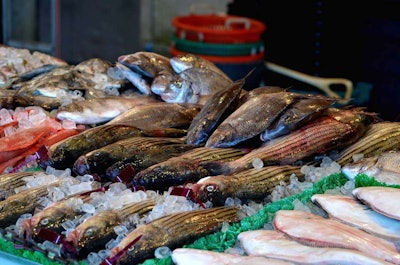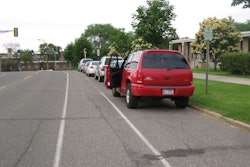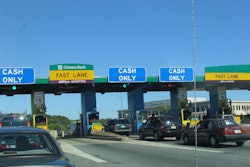 Fresh fish is sold on the Waterfront in Washington, D.C. (Photo: abrowntable / Flickr)
Fresh fish is sold on the Waterfront in Washington, D.C. (Photo: abrowntable / Flickr)Did a highway kill what could have been a thriving waterfront culture in Washington D.C.?
The Atlantic Cities argues that it did and that the District’s Maine Avenue Fish market is a classic example of what is and what could have been. (Note to self: Resist impulse to write that something smells fishy in D.C.)
The argument is basically that, “ For [the] Southwest quadrant of the District, the construction of the highway was a tourniquet that squeezed off the flow of boulevards and streets.” And then it got worse.
Stories like this one interest me for a number of pretty obvious reasons. But primarily I think they are examples of how media today are part of a very broad continuum of independent discussions that has its formal and informal end. As our mainstream news media supply shrinks, information comes from so many invested sources that virtually any and all views of a topic can generate their own audience.
That, in turn, means that a single descriptive story, say, in this case from the Washington Post, is replaced with a variety of stories on a single topic, all from people (not traditional journalists) with a distinct point of view if not an axe to grind. Or, as we might say in the South, they all have some sort of dog in the fight.
Which, in turn, means that highway planners, designers, architects, engineers, owners and builders are working in a world where all sorts of interests and sectors in the community where they work are accessing potentially influential stories about infrastructure, stories from the serious to the silly.
So, I return to a point I try to make as often as I can: Roads need a better media support team than they used to need.
If you look at this story and decide that your point of view as a road pro who knows about highways and inner cities is not represented, that the highway in question–I-359–has essentially been given a bum rap, well, then be aware that old fashioned responses are inadequate. Somewhere in D.C., and somewhere in cities across the country, people who believe in bike paths, fish markets and puppies in parks will read this and it will hit a responsive nerve.
Fine. That’s what is supposed to happen when there is a free flow of information. I have no beef with the writers of this story; it’s a good one, even if it does have an ‘angle,’ and I like bike paths, fish markets and puppies in parks. And sound criticism of roads can help us avoid mistakes made in the past. My concern is that the core arguments for highways can get lost in a public debate where there is a cacophony of voices, each shouting about just a single piece of the puzzle.
Public opinion is a key factor in what happens in our transportation infrastructure over the next few years, in part because of the age-old need for politicians to be re-elected and in part because public opinion now grows out of a million different “news” sources (and our politicians will be aware of the vote potential in each of those sources).
We must make a big, bold, public case for investment in transportation infrastructure–one in which the voices of our industry counterbalance specific or narrower interests. And we have to do it using the same machinery available to everyone else in this online, digital age.
So start a blog or create a website for your latest project, keep the people in your community up to speed on what you are doing via social media, give them some data on the jobs you create, YouTube some video from a current project, remind them of the congestion your work overcomes, show them why their ride is smoother and show them how the funding you get will affect their daily lives.













